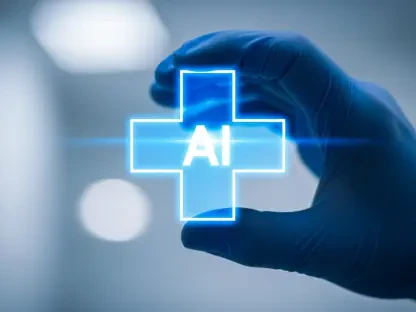I’m thrilled to sit down with Faisal Zain, a renowned expert in healthcare technology with a deep background in medical device manufacturing for diagnostics and treatment. His innovative work has been instrumental in shaping the future of digital health, particularly in how technology intersects with patient care. In this conversation, we dive into the transformative potential of tech-enabled healthcare services, the critical role of novel data in advancing AI, the importance of trust in patient-provider relationships, and how human observations are paving the way for more personalized and effective care solutions.
How would you describe tech-enabled healthcare services, and what sets them apart from the traditional ways we’ve delivered care?
Tech-enabled healthcare services blend cutting-edge software with human expertise to provide care in a way that’s more accessible and personalized. Unlike traditional healthcare, which often relies heavily on in-person visits and rigid systems, these services use technology to bridge gaps—think remote monitoring, apps for patient engagement, and virtual consultations. What makes them stand out is their ability to meet patients where they are, both physically and emotionally, while still maintaining that crucial human touch through caregivers like community health workers or doulas. This hybrid approach allows for more continuous care and often catches issues that might slip through the cracks in a typical clinical setting.
Why is high-quality, novel data so vital for large language models and AI tools in healthcare?
High-quality, novel data is the lifeblood of AI in healthcare because it provides the nuanced, real-world context that these models need to make accurate and meaningful predictions. Unlike static data from medical records, novel data from tech-enabled services captures the dynamic, everyday experiences of patients—things like their environment, behaviors, and emotional states. This kind of data helps AI go beyond just diagnosing a condition to understanding the broader factors affecting a patient’s health, enabling more tailored interventions and recommendations.
Social determinants of health, such as housing stability and food security, play a huge role in outcomes. Can you explain why these factors are so important to address?
Social determinants of health are often the hidden drivers behind a person’s well-being. Issues like unstable housing or lack of access to nutritious food can directly impact chronic conditions, mental health, and even recovery times. For instance, a patient with diabetes might struggle to manage their condition without a stable place to store medication or access to healthy meals. Addressing these factors isn’t just about solving immediate problems—it’s about creating a foundation for long-term health. Without this focus, we’re only treating symptoms, not the root causes.
How do caregivers in tech-enabled services build the kind of trust that encourages patients to share sensitive information?
Trust is built through consistent, empathetic human interaction. Caregivers in these services often spend more time with patients outside the high-pressure environment of a clinic, which allows for deeper connections. Simple actions like active listening, showing genuine concern, and following up on a patient’s concerns can make a huge difference. When patients feel seen and understood, they’re more likely to open up about personal struggles, whether it’s financial stress or family issues, which provides critical data for better care.
What value do social cues, like a change in tone or facial expression, bring to patient care, and how do caregivers use these observations?
Social cues are incredibly valuable because they often reveal what patients might not say outright. A hesitant tone or a furrowed brow can signal anxiety or discomfort about a topic, prompting a caregiver to ask deeper questions. These observations help uncover underlying issues—like fear of a diagnosis or challenges at home—that might otherwise go unnoticed. By noting these cues, caregivers can adjust their approach in real time, ensuring the patient feels supported and providing a fuller picture of their needs.
Can you share a specific instance where a caregiver’s observation or question revealed something critical about a patient’s health or situation?
Absolutely. I recall a case where a caregiver noticed a patient avoiding eye contact and speaking in short, clipped sentences during a routine check-in. Sensing something was off, the caregiver gently asked if anything at home was causing stress. That simple question opened the door to the patient revealing they’d recently lost their job and couldn’t afford their medication. This discovery allowed the care team to connect the patient with financial assistance programs, ensuring they didn’t skip critical doses. Without that observation and follow-up, the patient’s condition could have worsened significantly.
Looking ahead, what’s your forecast for the role of tech-enabled services in shaping the future of healthcare AI?
I believe tech-enabled services will be the cornerstone of healthcare AI’s evolution over the next decade. They’re not just delivering care today—they’re generating the rich, contextual data that will train AI to think more like humans, understanding not just medical symptoms but the lived experiences behind them. As these services scale, I foresee AI becoming a true partner in care, capable of predicting needs and personalizing solutions in ways we can’t yet imagine. But it all hinges on continuing to prioritize the human element in data collection, ensuring technology amplifies empathy rather than replacing it.









